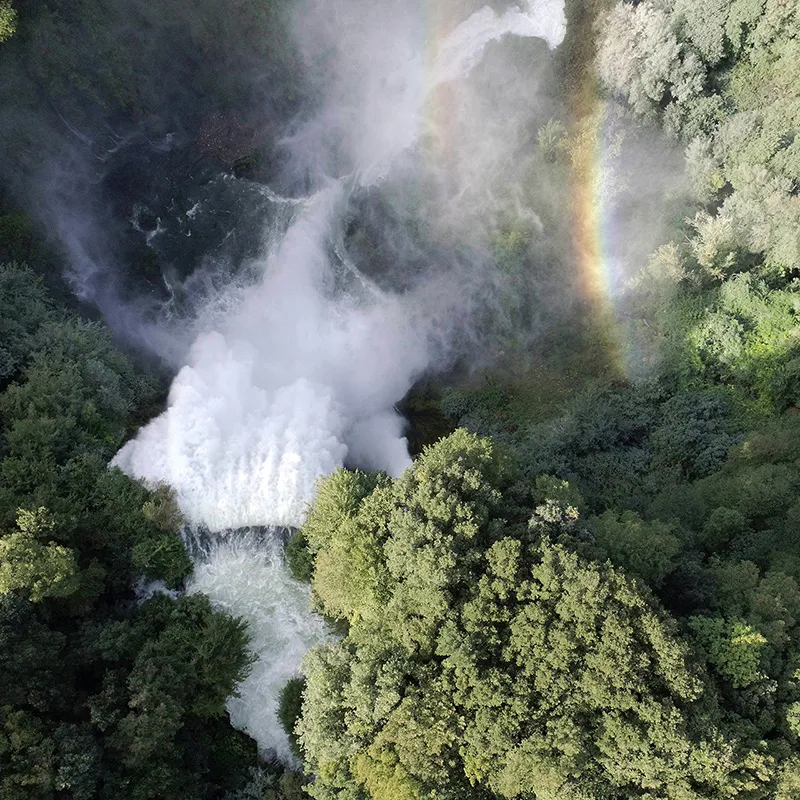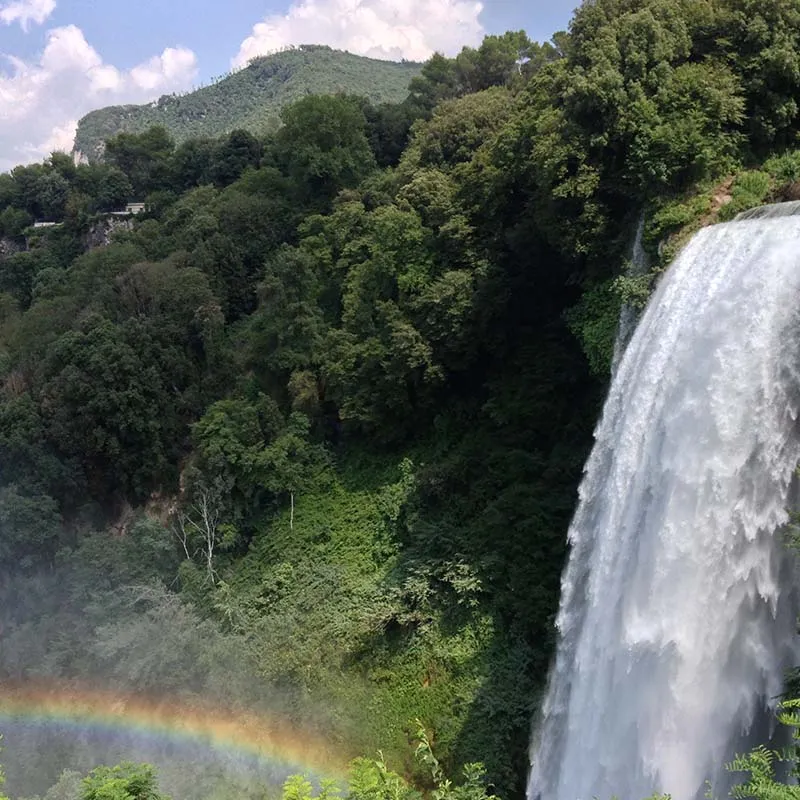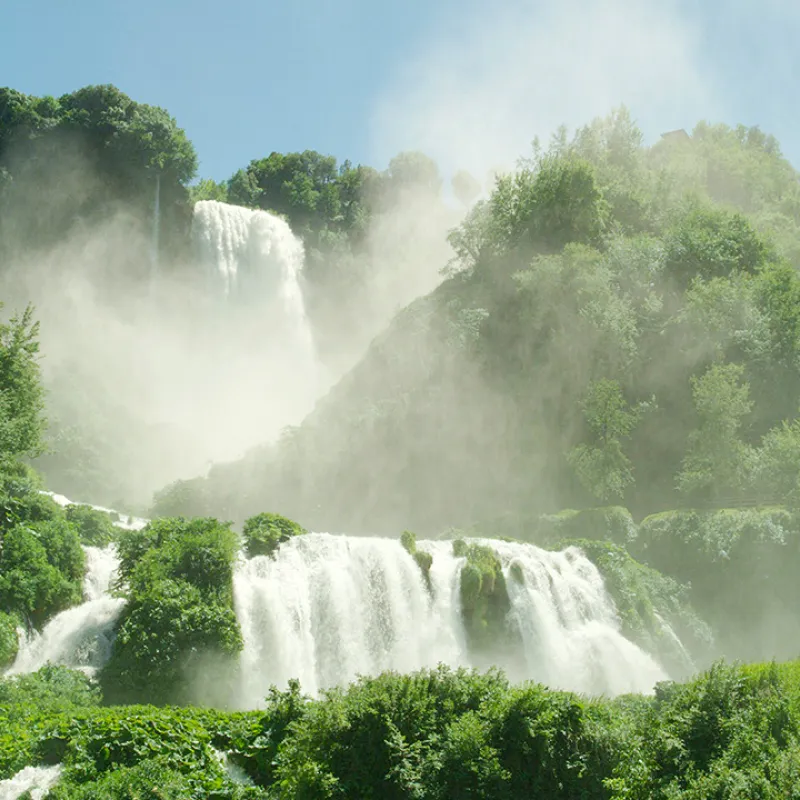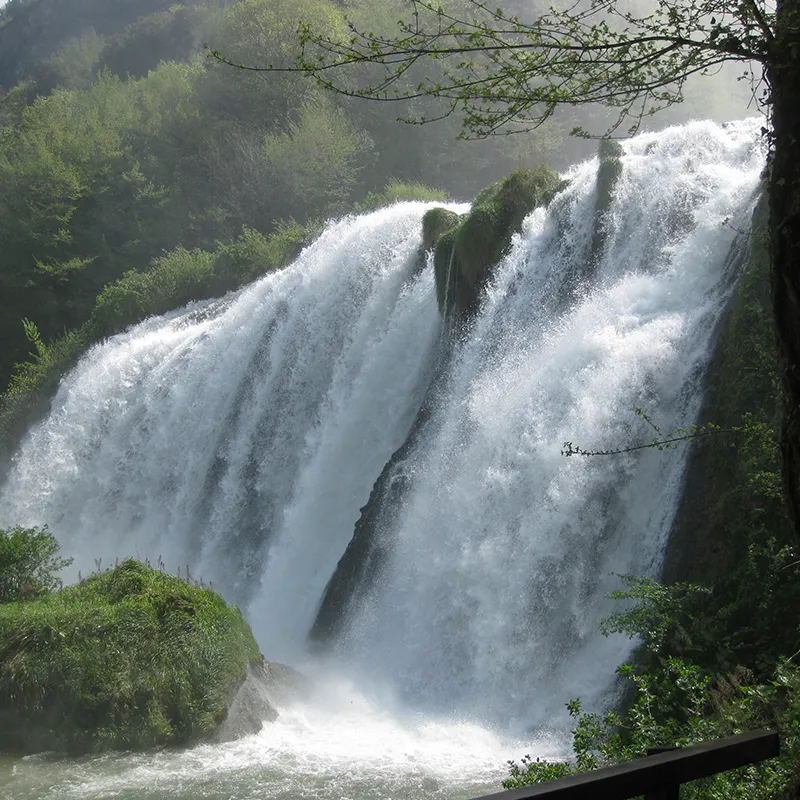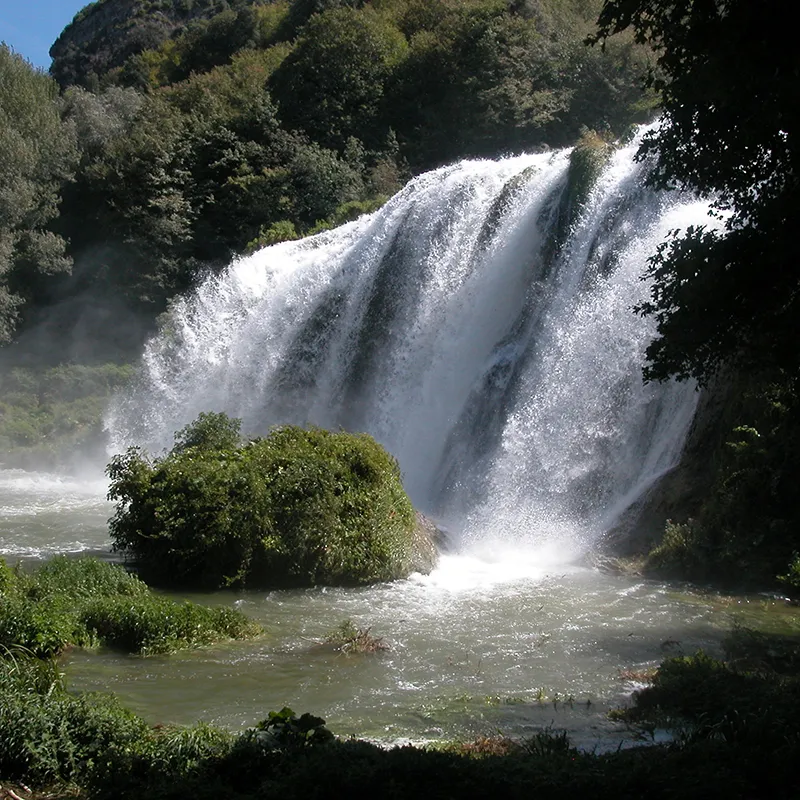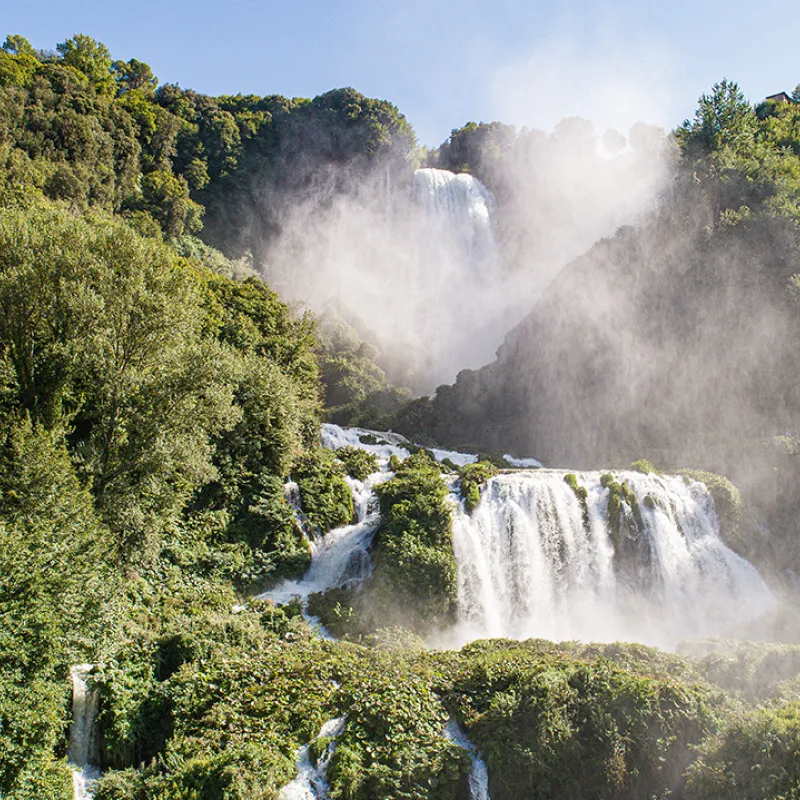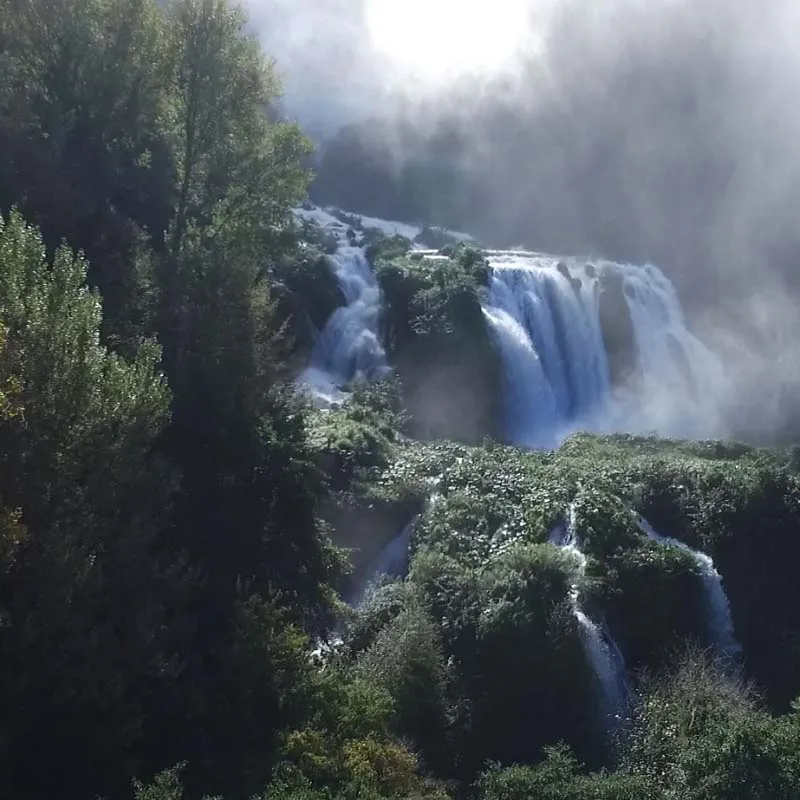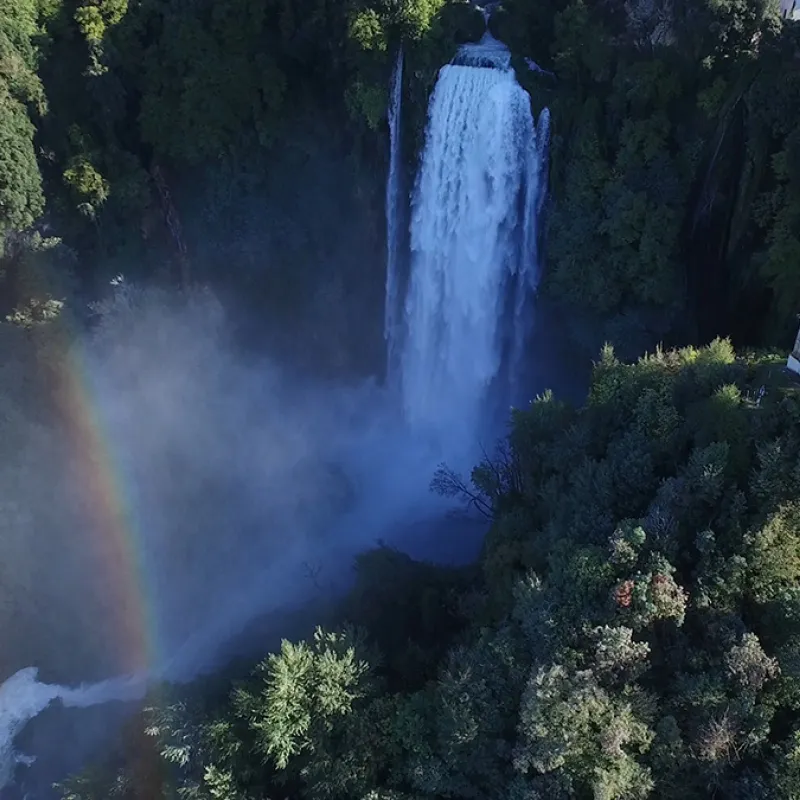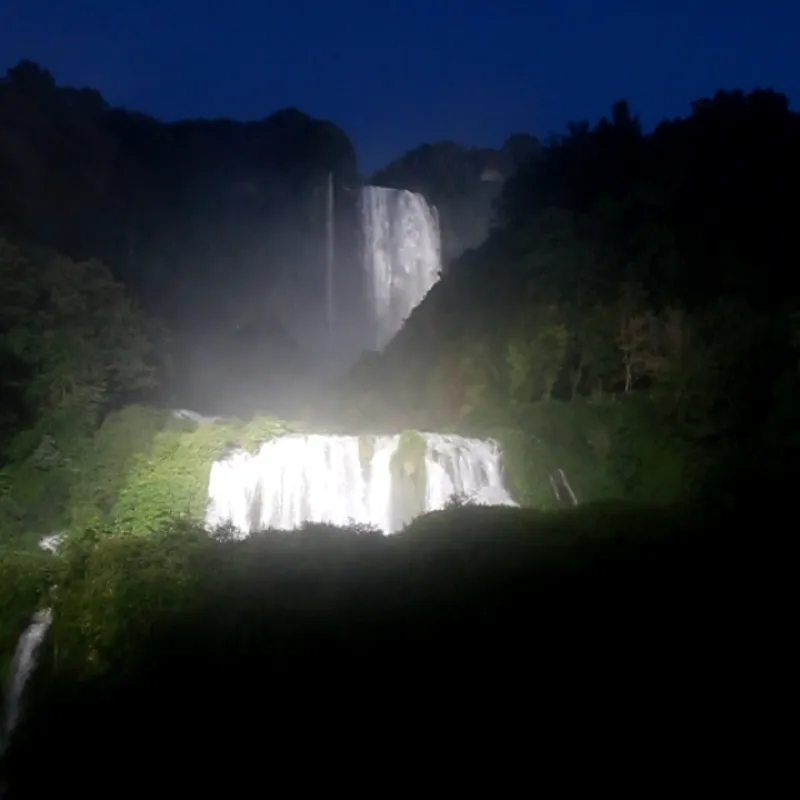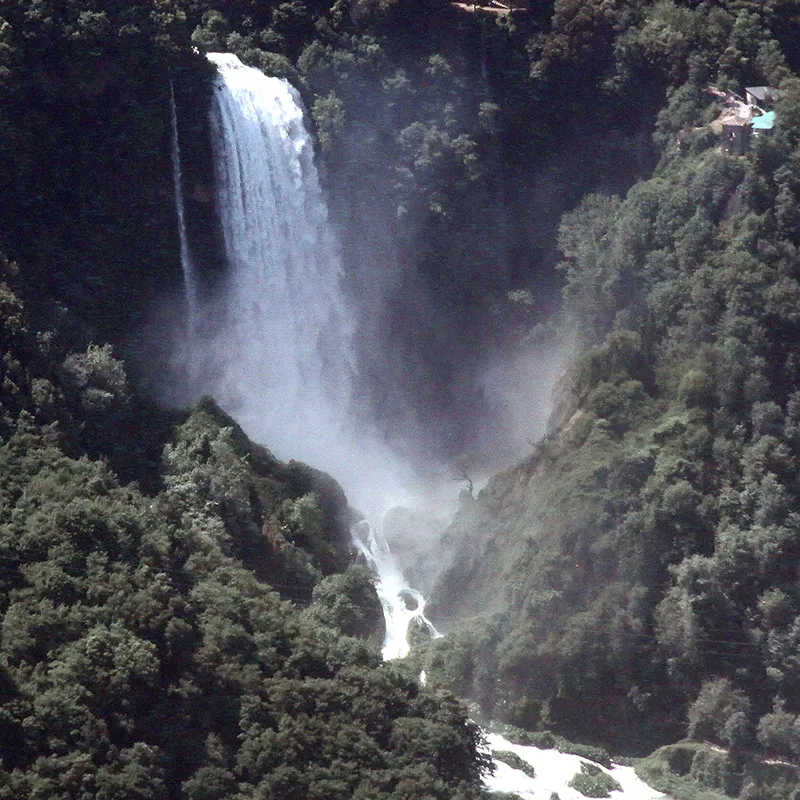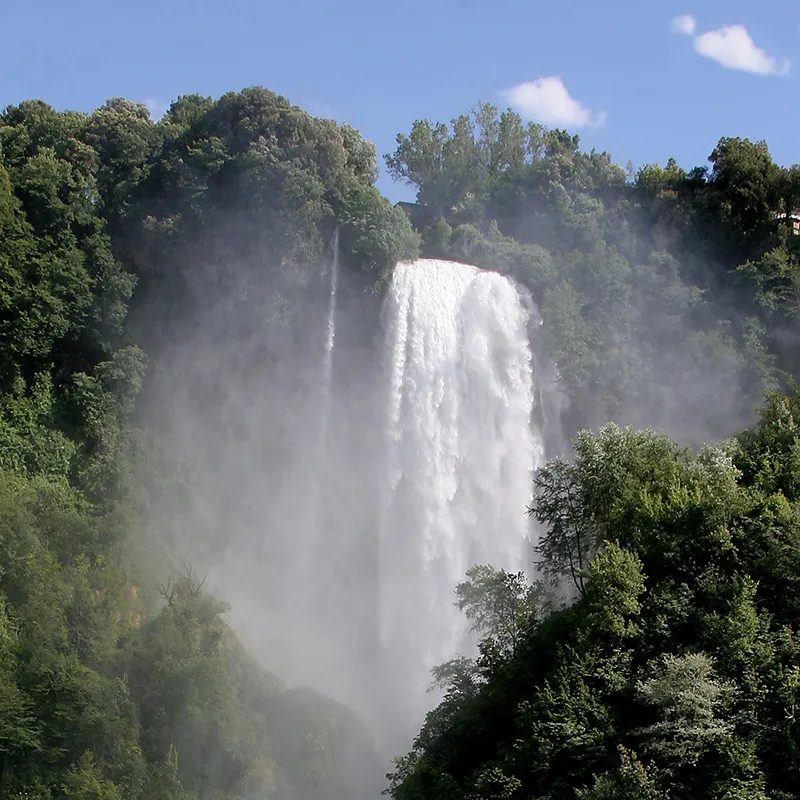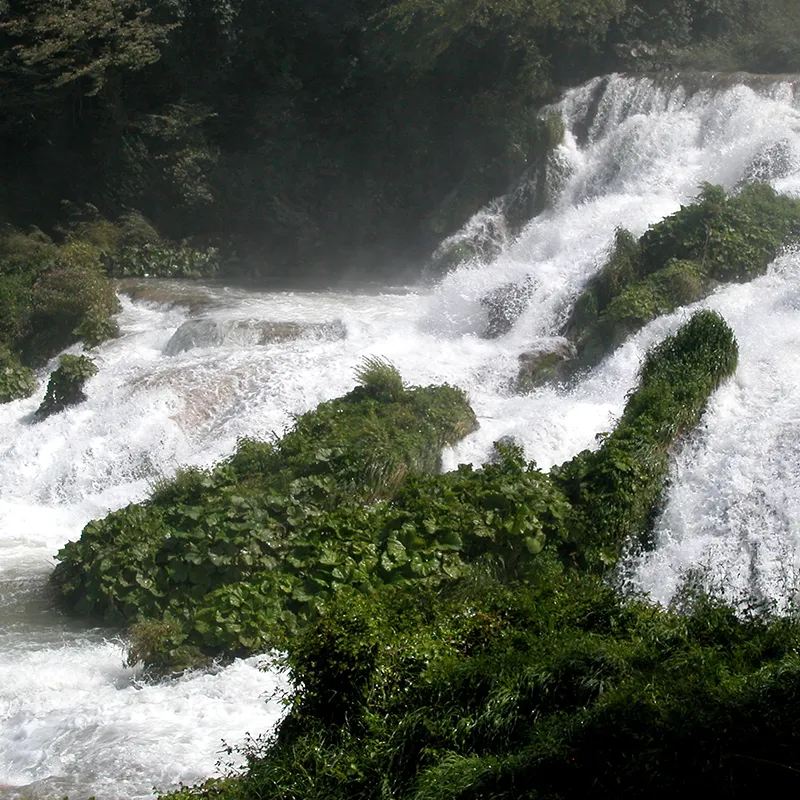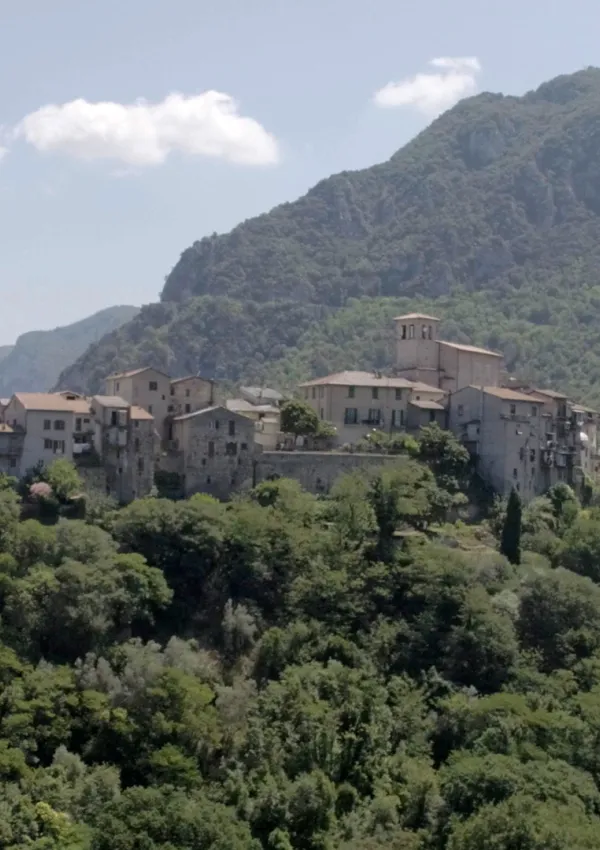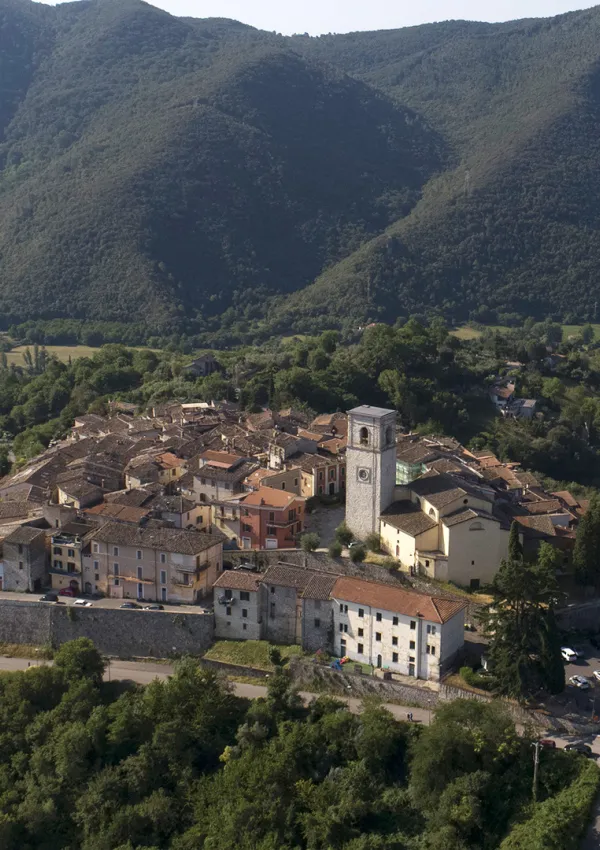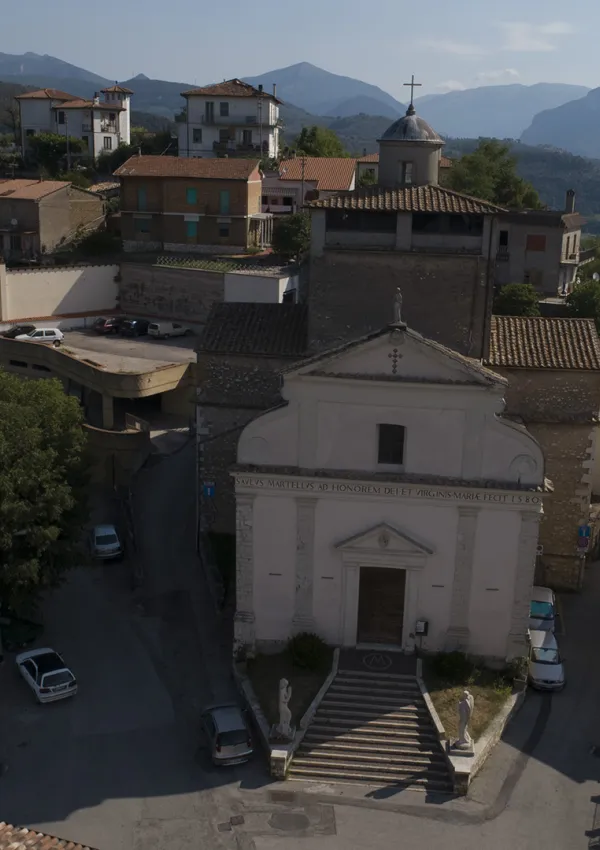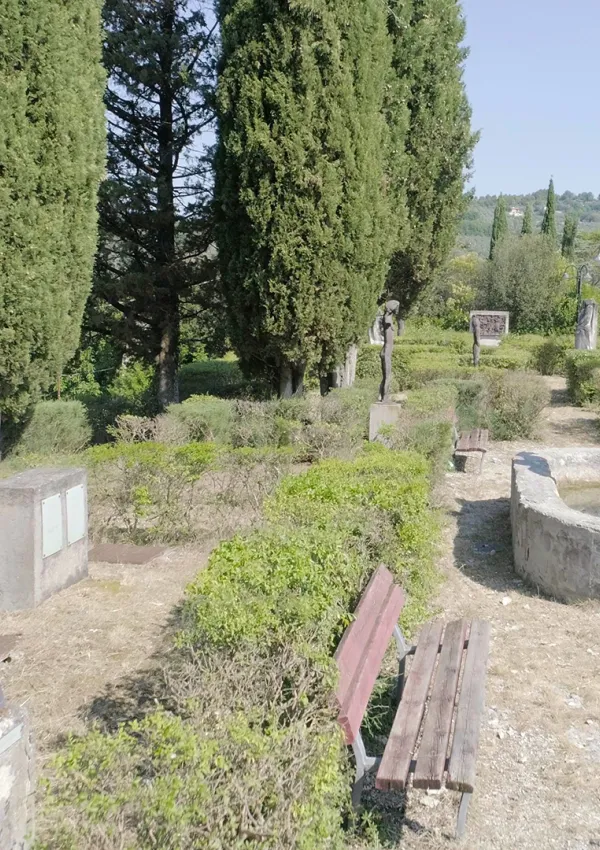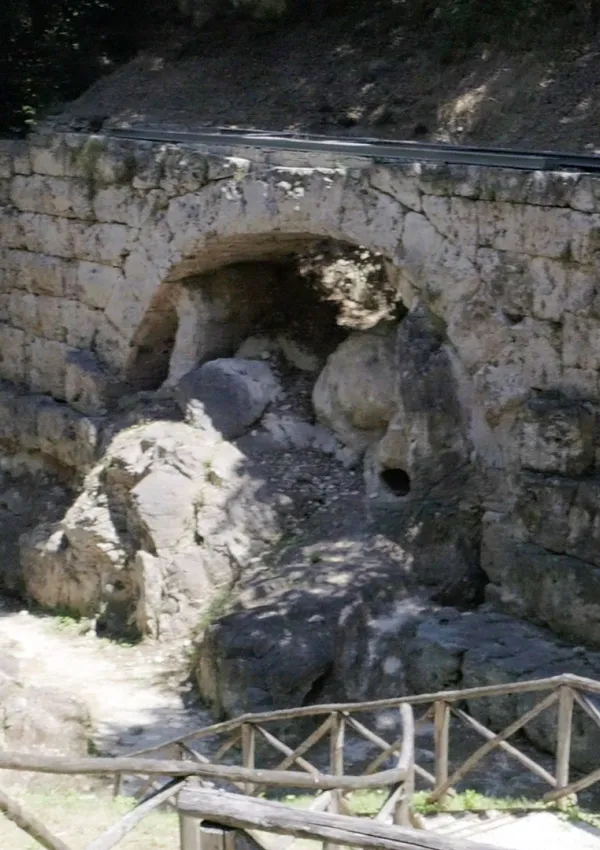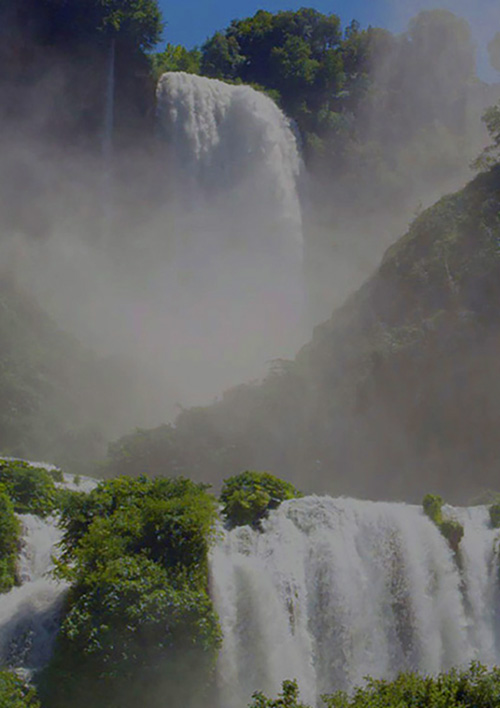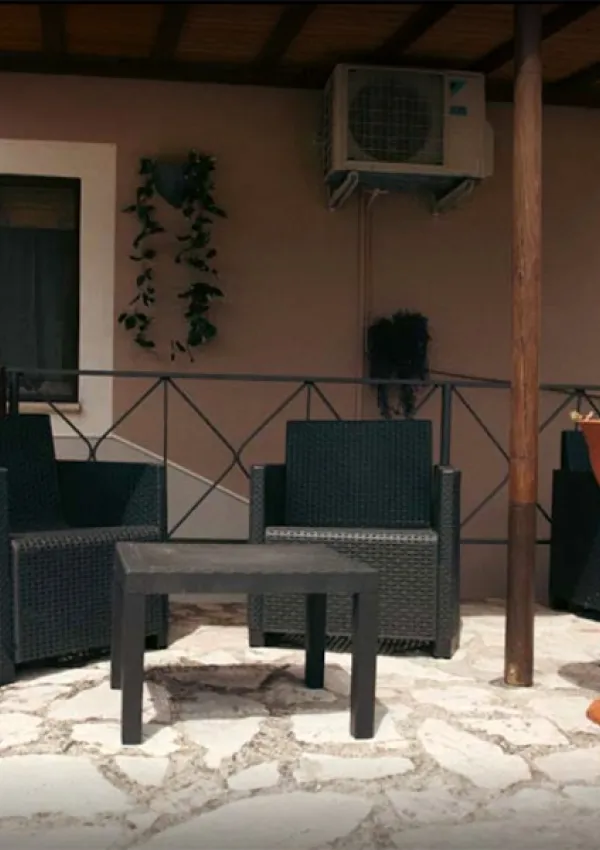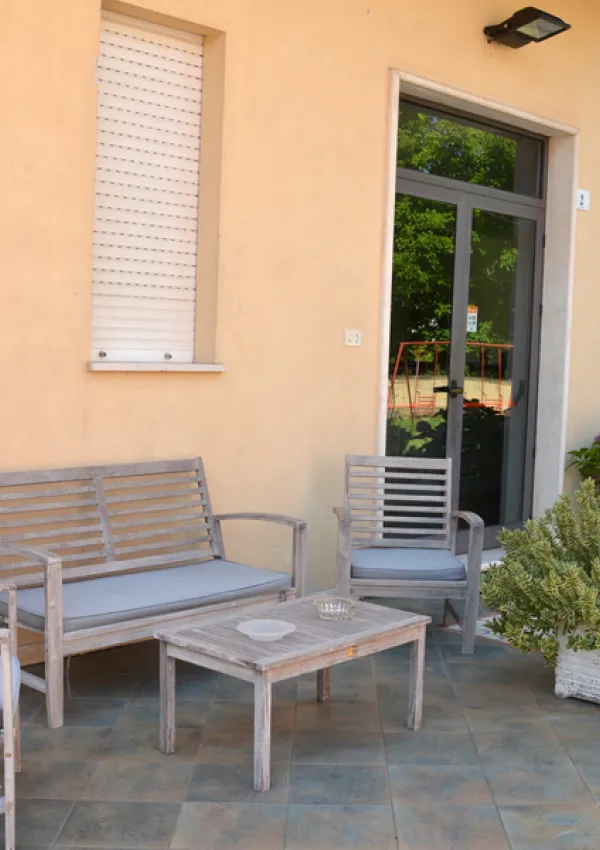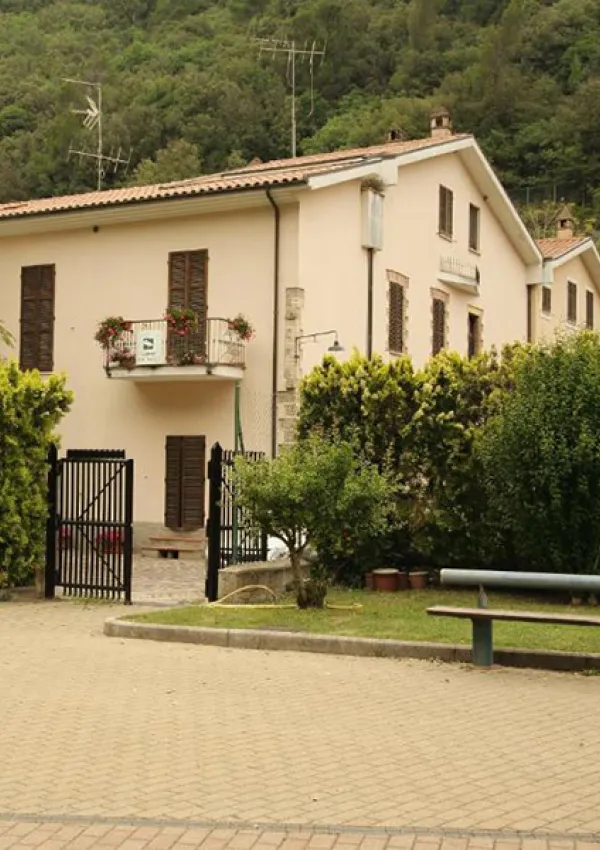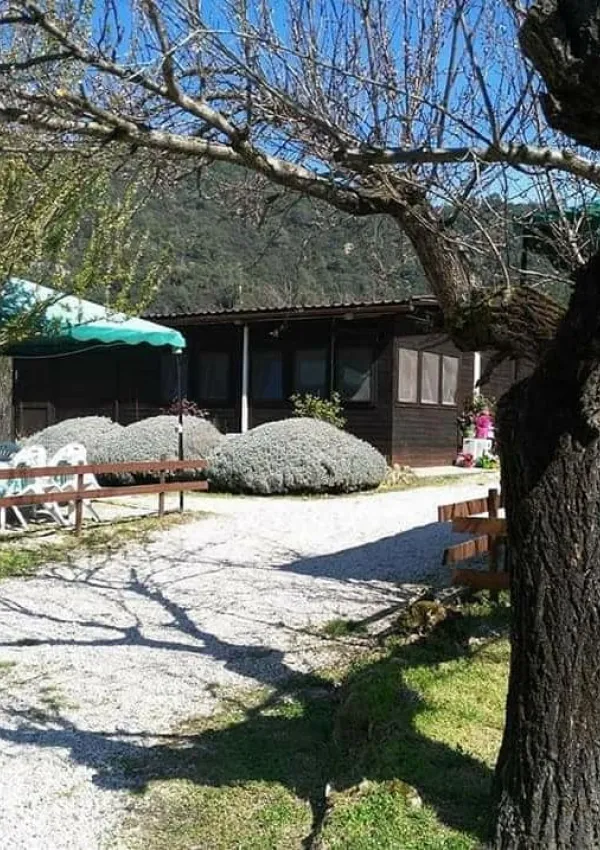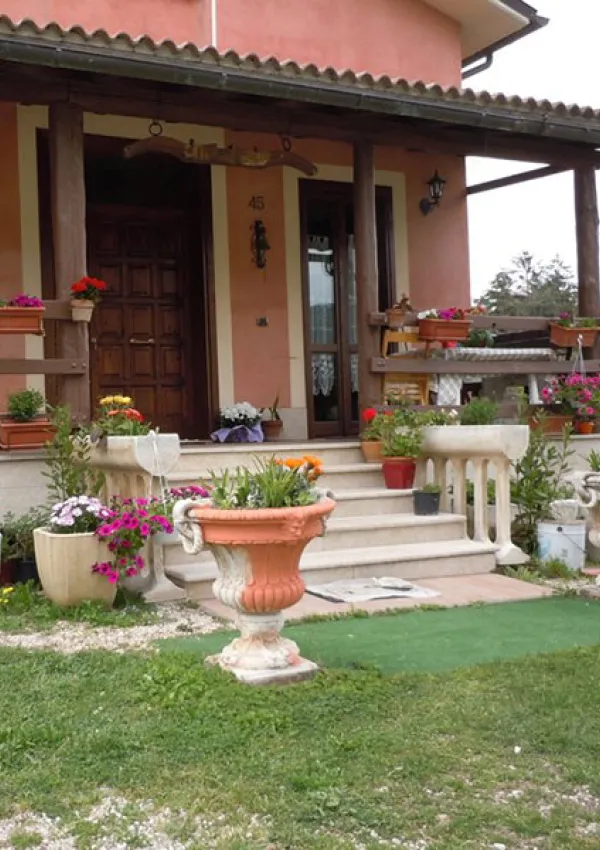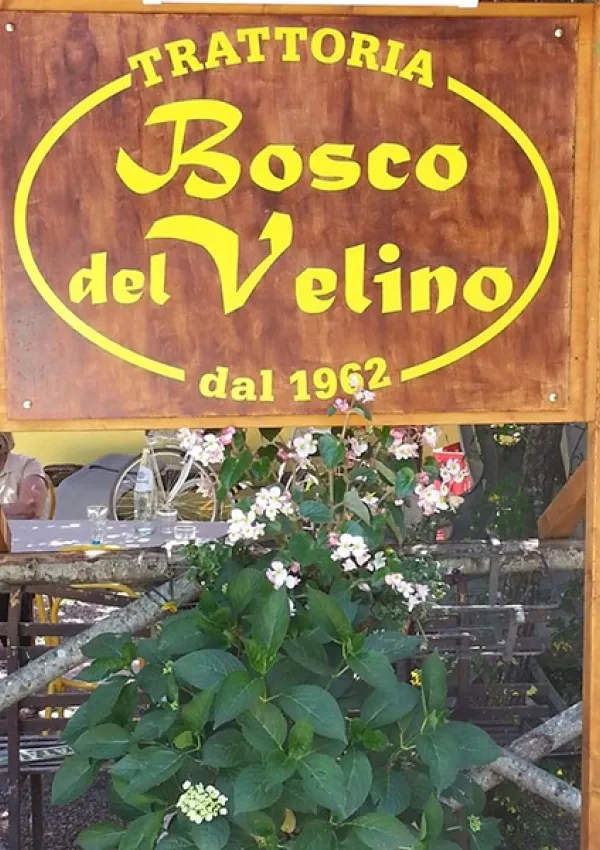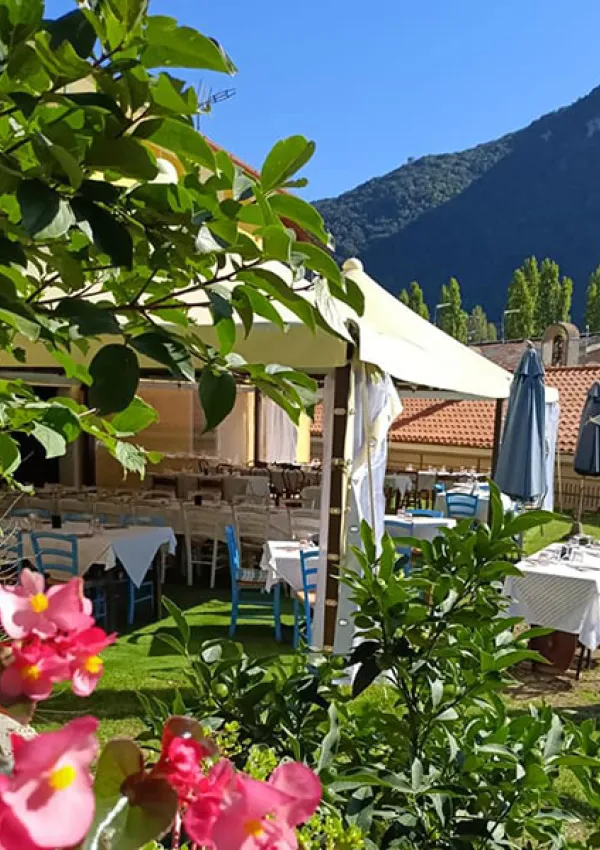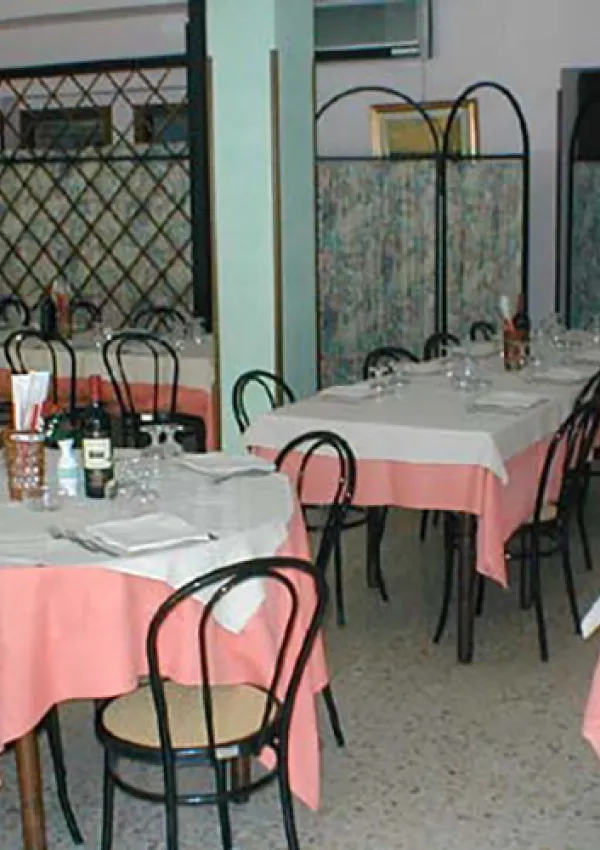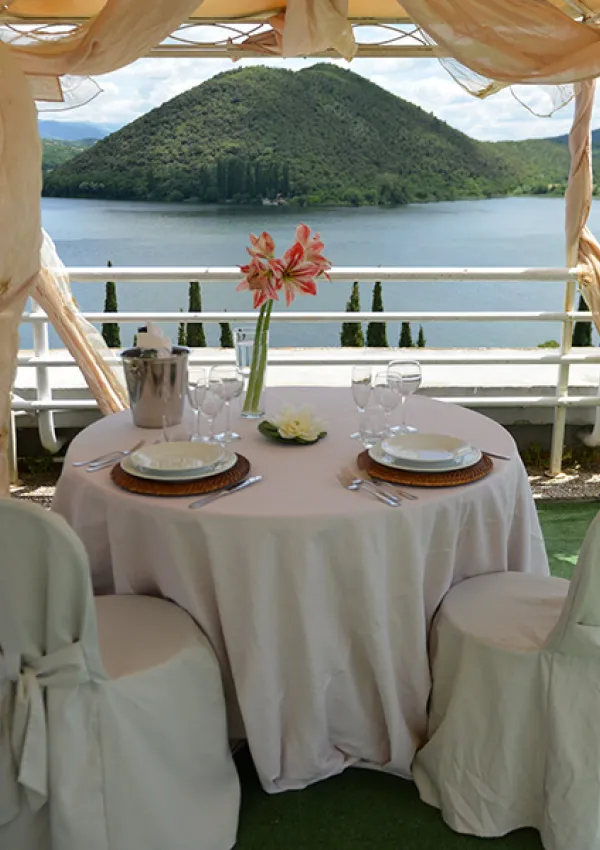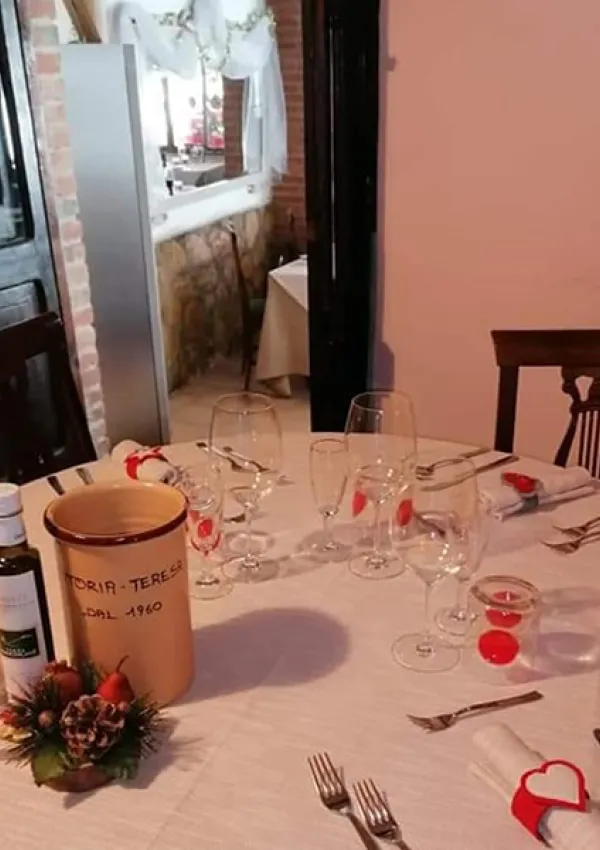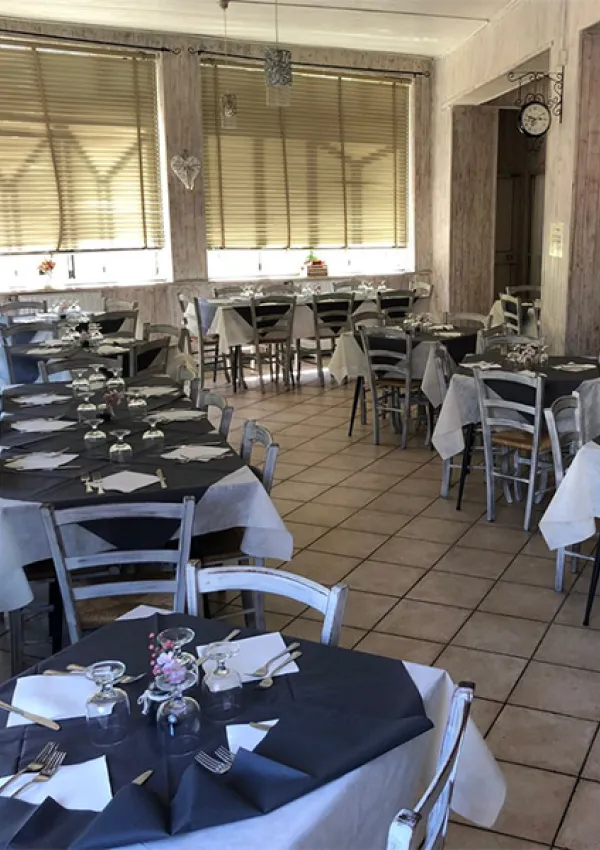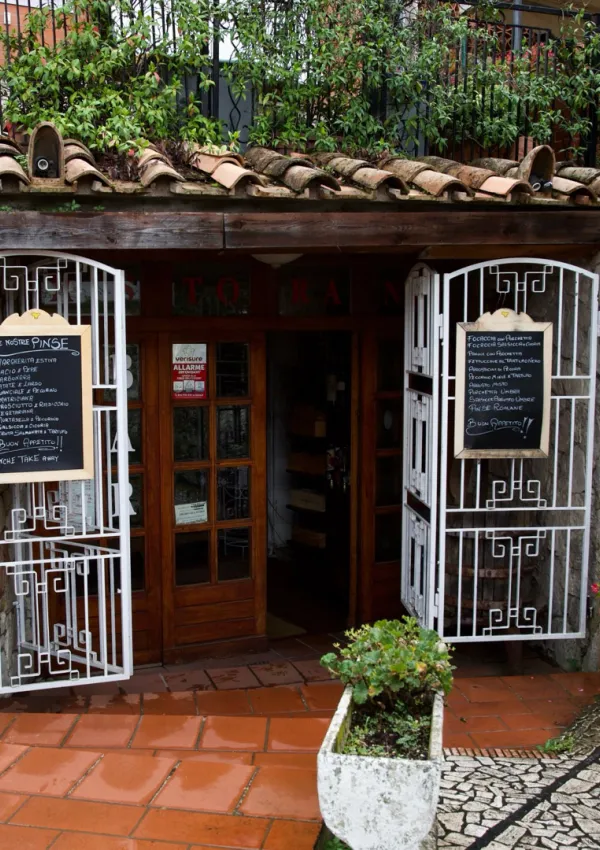Marmore Falls
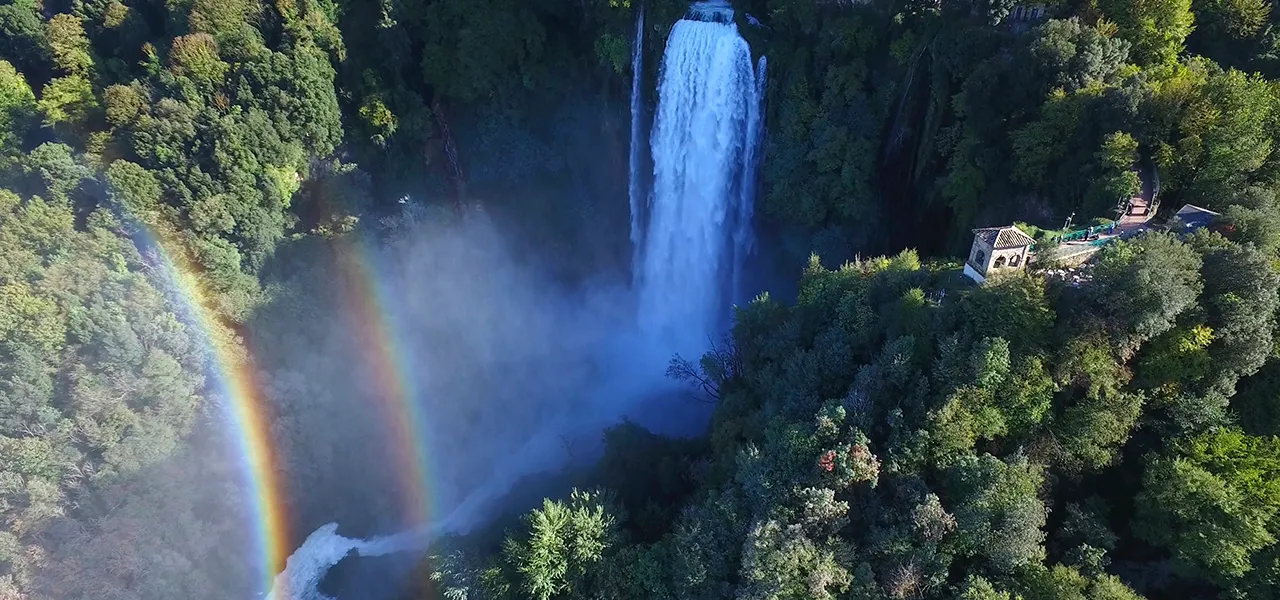
The Marmore Waterfall is formed by the drop of the Velino river into the Nera river below, with a drop of 165 meters.
The creation of the Waterfall dates back to 271 BC. It is a formidable work of Roman engineering, designed to favour the outflow of the waters of the Velino, which was responsible for frequent and disastrous flooding and the transformation of vast expanses of land into unhealthy swamps. In later periods and up to the Renaissance, further improvements were carried out until its current form was reached.
From the 15th century through to the 18th century, a lot of work was carried out on it by the most famous architects of the time, including Fioravante Fioravanti from 1417-22, Antonio Sangallo the Younger in 1545, Giovanni Fontana from 1598 -1601 and Andrea Vici from 1787-1793.
As a stop-over on the Grand Tour between the 17th and 19th centuries, it was visited, described and reproduced by the greatest artists of the time. Since the end of the 19th century it has been used for energy purposes to power several hydroelectric power stations and since the 1930s it has been part of the large hydroelectric system of the Galleto power station.
The area of the Falls is formed by travertine deposits, a naturally friable and non-compact rock that, with the intense circulation of water, the formation of cavities, caves and “karstic” shapes has been favoured.
The main cavities in terms of its speleological interest as well as its beauty and the impressiveness of the environment, are enclosed in three distinct complexes: the first consisting of the Grotta della Morta (the Cave of Death) and the Grotta delle Diaclasi (the Cave of the Diaclases) which spreads over 287 m with a maximum depth of 23 m; the second consisting of the Grotta delle Colonne (the Cave of Columns), developed in two main diaclases, which subsequent landslides have divided into two non-communicable environments; and finally, with a spread of over 190 m, the Grotta della Condotta (the Cave of Conduct), partly a landslide and with an old water pipe passing through it.
The vegetation along the entire course of water is lush and luxuriant.
The area of the Falls features large specimens of willows, alders and holm oaks. The Aleppo pine often clings to the limestone outcrops of the slopes while the hills are covered with holm oaks, oaks, maples and beeches.
A visit to the Botanical Garden located within the Nera Regional Fluvial Park (2460 hectares) allows visitors to admire the different plant species that populate the area.
There is abundant aquatic fauna. The woods are populated by several bird species, including the mountain swallow and the redstart. The short-toed eagle and the kestrel are important birds of prey that dominate the area.
